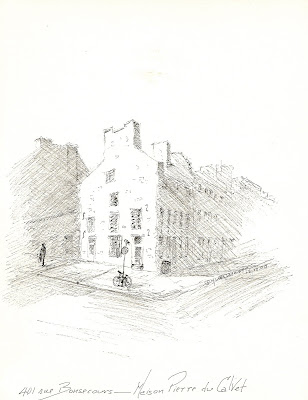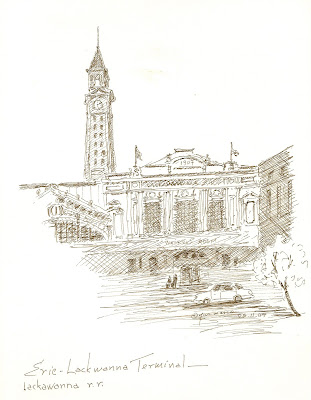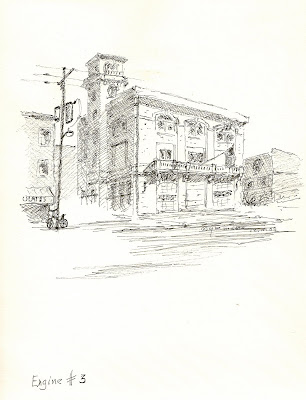401, Bonsecours Street
The houses built under the French regime are rather scarce in Montreal. Pierre du Calvet’s house was however built shortly after the English conquest in 1770 but strangely in the French style. It is located in front of the Notre-Dame du Bonsecours chapel. Several years ago it housed a cozy coffee shop where we used to drink a delicious coffee. Then its vocation changed several times during its history. Its stone walls are very thick and exceed the roof to form a firewall, which was mandatory at the time due to a large fire that had destroyed many little houses in the city.
Its constructor, Pierre Du Calvet, a Huguenot (so a protestant) arrived in Montreal in 1761, two years after the battle of “Les Plaines d’Abraham”. He was coming from Acadia where he lived a few years before. Originally the house was three times larger because he had built a warehouse on the back yard on St. Paul Street. Thus Du Calvet could boast that “in the first and second floor, there are 20 beautiful rooms and at least half as that could be built on the third floor”. Being a protestant merchant, he was permitted to get administrative positions then reserved only to Protestants. He was appointed justice of the peace.
His problems started after the invasion of the U.S. troops in 1775 - 76. He was accused of selling food to the rebels and was kept in prison for three years without any trial. He then traveled to the United States, to London and Paris to defend his case and be reimbursed for the goods the American army had stolen him. The US Congress finally accepted to compensate him for half of his claims (he was luckier than the Ursulines Sisters of Trois-Rivières!). In travelling to England in 1786, he perished in the sinking of the vessel.
The House has had several owners as one can imagine. Even Jacques Viger, the first mayor of Montreal, acquired it. The building has been used as hostel, grocery, barbershop, restaurant and even furniture museum. It has also been part of the Pierre Du Calvet Hotel as a restaurant. Now a sculptor uses it as a show room. Needless to say that we don’t go anymore to celebrate our three o’clock “coffee-cult”!



































